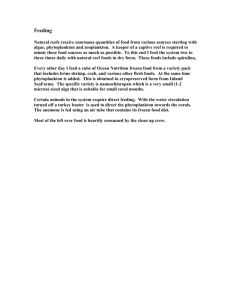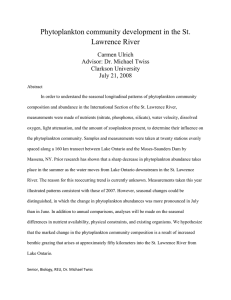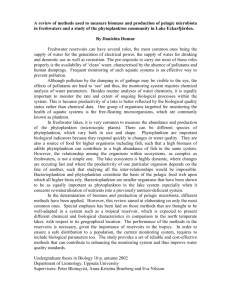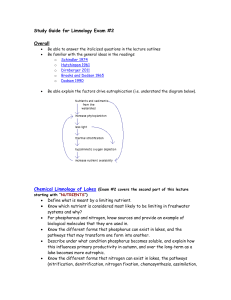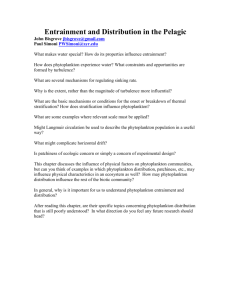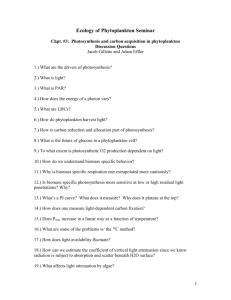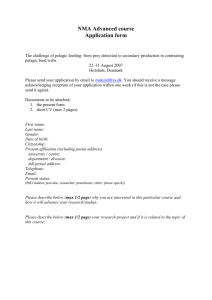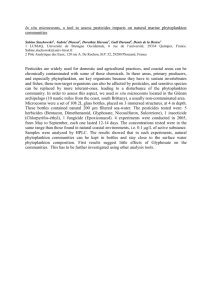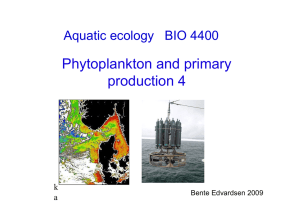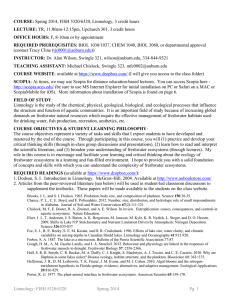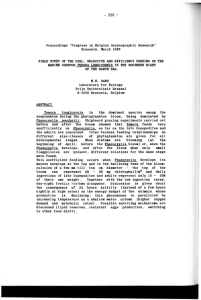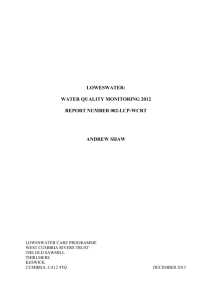Aquatic Ecology (EEES 47/57/7730)
advertisement
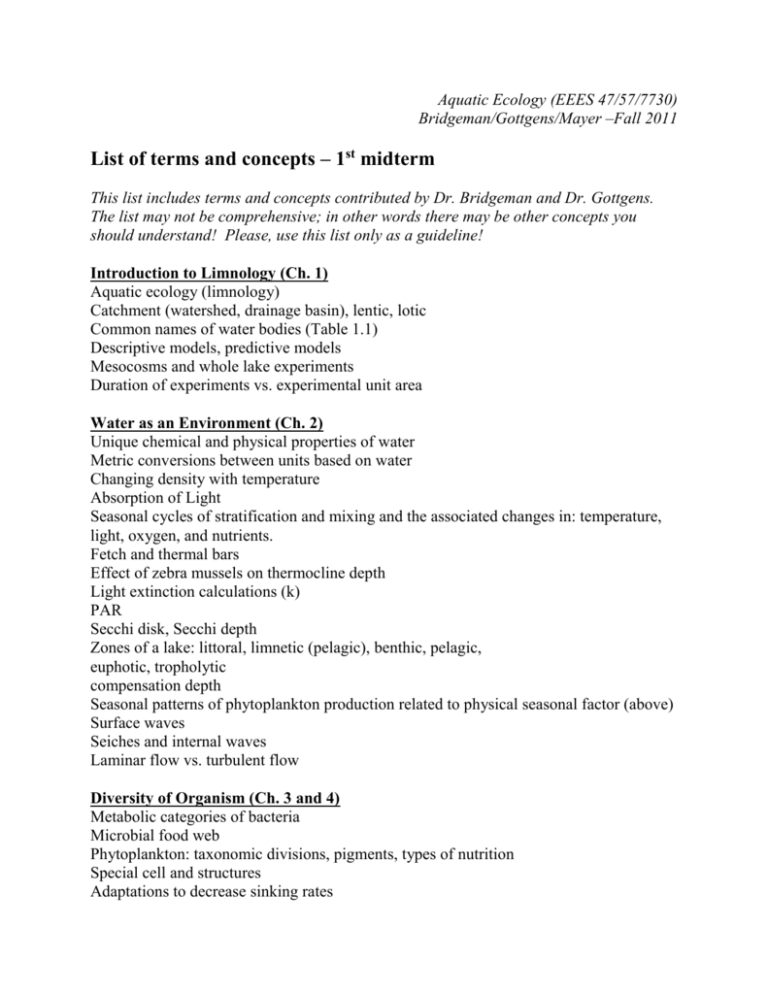
Aquatic Ecology (EEES 47/57/7730) Bridgeman/Gottgens/Mayer –Fall 2011 List of terms and concepts – 1st midterm This list includes terms and concepts contributed by Dr. Bridgeman and Dr. Gottgens. The list may not be comprehensive; in other words there may be other concepts you should understand! Please, use this list only as a guideline! Introduction to Limnology (Ch. 1) Aquatic ecology (limnology) Catchment (watershed, drainage basin), lentic, lotic Common names of water bodies (Table 1.1) Descriptive models, predictive models Mesocosms and whole lake experiments Duration of experiments vs. experimental unit area Water as an Environment (Ch. 2) Unique chemical and physical properties of water Metric conversions between units based on water Changing density with temperature Absorption of Light Seasonal cycles of stratification and mixing and the associated changes in: temperature, light, oxygen, and nutrients. Fetch and thermal bars Effect of zebra mussels on thermocline depth Light extinction calculations (k) PAR Secchi disk, Secchi depth Zones of a lake: littoral, limnetic (pelagic), benthic, pelagic, euphotic, tropholytic compensation depth Seasonal patterns of phytoplankton production related to physical seasonal factor (above) Surface waves Seiches and internal waves Laminar flow vs. turbulent flow Diversity of Organism (Ch. 3 and 4) Metabolic categories of bacteria Microbial food web Phytoplankton: taxonomic divisions, pigments, types of nutrition Special cell and structures Adaptations to decrease sinking rates Resource competition between phytoplankton species Major taxonomic groups of zooplankton Modes of reproduction (parthenogenesis, sexual, resting eggs) Types of feeding (filter feeding, raptorial, feeding structures) Avoidance of predation (cyclomorphosis, DVM) Brooks and Dodson, Science, 1965 (see later chapter in text and Brooks and Dodson paper posted on myUT)
